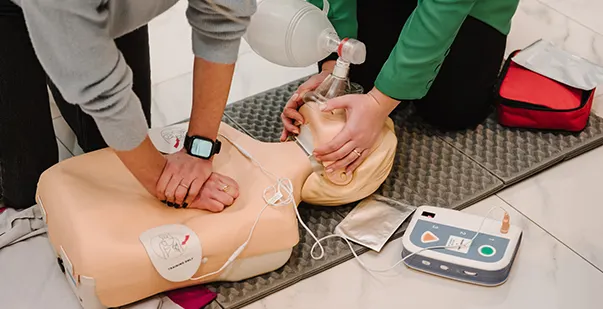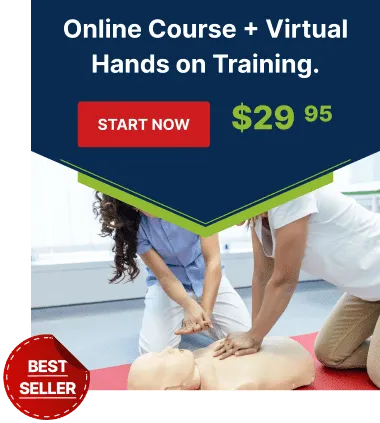An AED (Automated External Defibrillator) is a life-saving device designed to deliver electric shocks to victims experiencing sudden cardiac arrest. It is simple to use and aids in restoring normal heart rhythms, eventually increasing the chances of survival for victims. In fact, the use of AEDs in CPR has been reported to save over 1700 lives in the United States every year.
But what if the emergency is not as simple as it seems? Being observant of the special considerations when using an AED ensures your safety and the effectiveness of your resuscitation process.
Read on to get a detailed overview of when and how you should use the AED to stay prepared to act confidently.
Master ACLS Now
Get ACLS certified with confidence
The Role of AED in Regulating Heart Rhythm
Your heart operates through electrical signals that alert the organ to pump blood. The electrical signal induces contraction in the ventricles to squeeze blood out of the heart. ‘Each contraction is followed by relaxation, allowing more blood to flow into the heart. When your heart is ailing from disease or injury, its electrical activity is likely to be disrupted. In such cases, blood circulation throughout the body becomes insufficient. Here’s a brief overview of how AED regulates your heart rhythm.
- Ventricular fibrillation (V-Fib), a condition where the ventricles quiver due to random electrical signals, often occurs. Similarly, ventricular tachycardia may develop when the ventricles contract abnormally fast.
- These irregular rhythms disrupt the heart’s function, potentially leading to cardiac arrest. In this case, the body receives limited oxygen, causing the person to collapse and stop breathing.
- When faced with emergencies, you should dial up emergency services and commence CPR immediately.
- You should keep performing CPR until the AED is available/ready for use.
- AEDs are medical devices that send electric pulses to your heart, restoring a normal heartbeat.
- In fact, they are only effective aids to revive the heart when an individual is experiencing SCA (Sudden Cardiac Arrest).
Read More: How Does an AED Work?
What Special Circumstances to Consider When Using AED?
Now that you know the role of AED in restoring the heart rhythm, it’s time to know what are special considerations when using an AED. Every AED unit has its use statement, so it is recommended to review your requirements before you choose the AED. Below are some of the specific conditions to keep in mind as a rescuer while using an AED on the victim.
A Patient With a Hairy Chest
If the victim’s chest region has excess hair, it will become tricky for you to analyze the rhythm of the heart with the electrode pad. As a result, you will find it extremely challenging to deliver the shock at the appropriate time. With the presence of chest hair, the pad will raise off the victim’s chest, failing to make full contact with their skin. Moreover, you will also find it difficult for the pad to stick to the skin. To overcome such hurdles, you can implement the following solutions.
- Use a razor to shave off the patient’s chest hair in the region where the pad has to be placed.
- If the razor isn’t available, the device will instruct you to look for pads, where you should apply substantial pressure on the pads to enhance the conductivity rate.
- In extreme situations, you can attach the pads swiftly to the victim’s chest and then remove them fast to get rid of the chest hair. Then, you can apply a fresh set of pads.
A Patient Who is Wet, Sweaty, or Submerged in Water
Now another scenario to explore when exploring the answer for what are some of the special considerations when using an AED is about the patient who is wet or moist from sweating. As water is an excellent conductor, the power of the shock delivered with AED won’t be adequate to revive the patient. Therefore, the device becomes inefficient during emergencies. Here are some ways to treat a patient in such conditions,
- Remove them from the scenarios if they are immersed in water and bring them to a dry region.
- Wipe away the water and get their chest to become completely dry.
- Drying the victim’s entire body is not necessary. Instead, focus on the area between the pads.
A Patient Who Is A Child or Infant
Cardiac arrest in children and infants is a rare occurrence but not completely unheard of. If the child is under 8 years of age or weighs less than 55 pounds, you should administer a reduced electrical shock using an AED.
Some AEDs are available in a special pediatric setting and equipped with child electrode pads to help in such pediatric emergencies. Here are some points to keep in mind while using an AED on a child or infant.
- You can use standard adult electrode pads on children if the AED lacks the child setting or child pads.
- There is a different way to position the pads on a child when compared to its position on the adult victim’s chest.
- Place one of the pads in the center of the child’s chest, while the other must be positioned in the middle of the back.
A Patient Who Is Pregnant
You can use an AED device on pregnant women without the fear of harming both the mother and fetus. The electrical shock, when delivered properly, will not affect the pregnancy. In contrast, it can result in adverse effects when you fail to use an AED on pregnant patients when they are experiencing cardiac arrest.
When the heart stops functioning, oxygenated blood cannot be transported to the cells and organs of both the mother and the fetus. Therefore, as a responsible rescuer, you should follow the device’s guidelines to restore the victim’s heartbeat as soon as possible.
A Patient With An Implantable Pacemaker or Defibrillator
A pacemaker or defibrillator is another answer to what are some of the special considerations when using an AED. When you use an AED on a patient with a pacemaker, the electrical shock will likely get blocked due to the device. Below are some critical things to keep in mind if you find yourself in such special circumstances,
- You can identify if the victim has an implanted pacemaker as there will be a scar present on either side of the victim’s abdomen or upper chest.
- You can also witness a hard lump on the left side of their chest or near their heart, which might prevent them from properly placing the pads.
- The pacemaker or defibrillator will likely cease its function after the victim experiences a sudden cardiac arrest. Therefore, you don’t need to worry about the device getting damaged.
- While placing the pads on victims, take a front-and-back approach. You can also attack them a couple of inches below the traditional placement.
When Should You Avoid Using an AED?
Proper training, clear communication, and adherence to safety protocols maximize the chances of successful resuscitation. While some patients require the immediate use of AED, some patients in certain circumstances should never be treated with an AED. Here are some situations where you should avoid using an AED.
-
Conscious and Breathing
In general, an AED should be used only if the victim is unconscious and not breathing. There is also a type of breathing known as agonal breathing, which can happen in emergencies. Agonal breathing sounds like gasping, shallow half-breathing, snorting, and labored breathing sounds. Therefore, you should be able to distinguish between agonal and normal breathing. If the victim is conscious and breathing properly, it is advised not to use an AED on them.
-
DNR
You should avoid using AED on victims if they have DNR or do not resuscitate. If you find them with a DNR bracelet, you should respect their wishes and stay responsible for the guidelines by not administering the electrical shock on them.
-
Heart Attack
If the victim is suffering from a heart attack, you should not use an AED on them. A heart attack differs from cardiac arrest. Cardiac arrest is an electrical malfunction in the heart, while a heart attack refers to a blockage in one of the arteries that prevents the blood flow to the heart. Individuals with heart attacks will be conscious and breathing, unlike those suffering from SCA, who are unresponsive.
-
Faulty or Expired AED
Avoid using a faulty AED on a victim experiencing cardiac arrest. Before administering them, ensure that the device is in proper working mode and that the green light is showing. Check all the parts of the device, including electrode pads and batteries, and note their expiration date.
If you find any faults or missing parts, refrain from using them. Instead, call emergency services and look for another properly functioning AED until they arrive.
Read More: The Important Role of AED Infant – A Life-Saving Guide
Stay Prepared to Save Lives!
During sudden cardiac arrest, the heart malfunctions and stops beating unexpectedly, denying oxygen-rich blood to the brain and other vital organs. A portable Automated External Defibrillator (AED) analyzes the heart rhythm of a cardiac arrest victim and delivers an electric shock to help the heart establish an effective rhythm.
AEDs are usually designed to be simple to use, even for laypeople with proper training. However, each emergency is unique, and knowing special considerations when using an AED applies to both medical and non-medical individuals.
References







